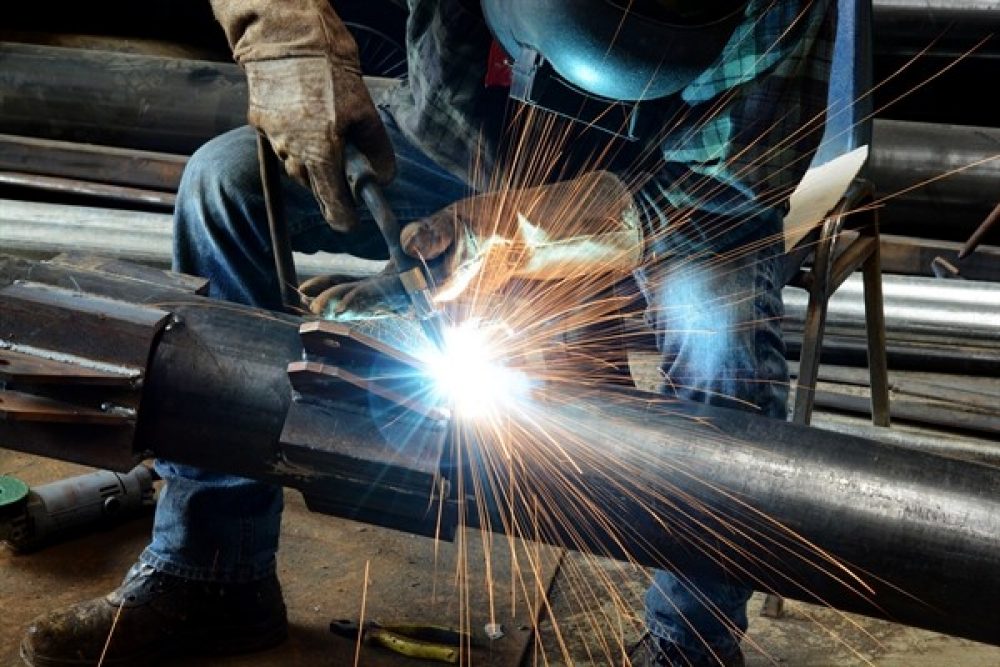Welding WPS: Usual Mistakes to Prevent and Just How to Correct Them
Welding WPS: Usual Mistakes to Prevent and Just How to Correct Them
Blog Article
Understanding Welding WPS Standards: Ideal Practices and Techniques for Top Quality Welds
In the world of welding, grasping Welding Treatment Specification (WPS) requirements is an important component that straight affects the high quality and stability of welds. Following these requirements ensures consistency and dependability in welding outcomes. Nonetheless, accomplishing quality in welds goes past simply understanding the requirements; it entails implementing ideal techniques and strategies that raise the craft to a level of accuracy and skill that establishes apart the average from the phenomenal. As we browse via the complexities of welding WPS standards, revealing vital insights and approaches for accomplishing top-tier welds will certainly be critical for welders looking for to master their craft and create welds that stand the test of time.
Recognizing Welding WPS Criteria

Understanding WPS standards is important for welders, designers, and inspectors associated with welding procedures. By adhering to WPS standards, welders can produce welds that fulfill the called for mechanical homes and structural honesty. Assessors count on WPS documentation to validate that welding procedures are being adhered to appropriately and that the resulting welds are of top quality. Engineers make use of WPS standards to develop welding procedures that guarantee the resilience and integrity of welded structures.


Vital Devices for Quality Welds
Grasping welding WPS standards is crucial for welders to successfully make use of the important tools required for producing high quality welds. Among the most critical devices for top quality welds is a welding maker. The type of welding equipment required depends upon the welding procedure being utilized, such as MIG, TIG, or stick welding. Welding helmets are additionally essential to protect the welder's eyes and face from triggers, heat, and UV radiation. In addition, welding gloves made from heat-resistant and resilient materials protect the hands from burns and injuries. Magnets and clamps assist hold the work surfaces together securely during the welding process, ensuring precise and specific welds. Cord brushes and damaging hammers are vital for cleaning up the weld joint before and after welding to get rid of any contaminations that can impact the quality of the weld. Last but not least, a gauging tape and angle mill serve tools for making sure proper alignment and preparing the work surfaces for welding.
Key Methods for Welding Success
To accomplish welding success, one need to master the vital techniques crucial for generating high-grade welds. One find out critical strategy is preserving the correct arc size. Maintaining the electrode at the ideal range from the workpiece is crucial for developing solid, consistent welds. Furthermore, regulating the traveling rate is vital. Moving too rapidly can cause not enough penetration, while relocating as well slowly can result in too much heat input and potential problems. Correct control of the electrode angle is one more vital technique. The angle at which the electrode is held can impact the bead shape and penetration of the weld. Furthermore, ensuring constant gun angle and direction of traveling is crucial for harmony in the weld grain. Last but not least, preserving a stable hand and a steady welding placement throughout the procedure is crucial to attaining precision and uniformity in the welds. By grasping these crucial techniques, welders can boost the top quality of their work and accomplish welding success.
Ensuring Conformity With WPS Standards

Additionally, welders must undergo training to acquaint themselves with the WPS requirements pertinent to their job. Routine audits and inspections ought to be performed to validate that welding activities straighten with the prescribed WPS standards. In addition, preserving detailed documents of welding parameters, devices calibration, and examination results is important for showing conformity with WPS criteria - welding WPS. By carefully sticking to WPS criteria, welders can ensure that their work meets the needed quality levels and adds to the general success of the welding project.
Troubleshooting Common Welding Issues
When encountered with typical welding concerns, determining the source is crucial for efficient troubleshooting. One prevalent problem is the presence of porosity in welds, typically created by contaminants such as wetness, oil, or rust. To address this, making certain correct cleansing of the base steel prior to welding and utilizing the appropriate protecting gas can significantly decrease porosity. Another problem frequently run into is absence of fusion, where the weld stops working to effectively bond with the base product. This can stem from poor heat input or inappropriate welding method. Adjusting criteria such as voltage, cord feed rate, or travel rate can assist boost blend. In addition, distortion, cracking, and spatter are common welding difficulties that can be mitigated via appropriate joint preparation, constant heat control, and picking the suitable welding consumables. By thoroughly comprehending these common welding problems and their origin, welders can effectively repair issues and achieve premium welds.
Conclusion
In conclusion, understanding welding WPS requirements needs a comprehensive understanding of the standards, utilizing essential devices, and implementing key strategies for successful welds. Ensuring conformity with WPS criteria is vital for creating high quality welds and avoiding usual welding issues. By following best techniques and methods, welders can achieve dependable and constant lead to their welding jobs.
In the realm of welding, mastering Welding Procedure Specification (WPS) requirements is a internet vital part that straight affects the top quality and honesty of welds.When diving right into the realm of welding practices, an essential facet to comprehend is the significance and ins and outs of Welding Treatment Spec (WPS) criteria. WPS standards provide an in-depth guideline for welding operations, making certain consistency, top quality, and safety and security in the welding process. The kind of welding device required depends on the welding procedure being used, such as MIG, TIG, or stick welding.Attaining welding success through the mastery of key methods requires a detailed understanding and adherence to Welding Treatment Specification (WPS) criteria.
Report this page